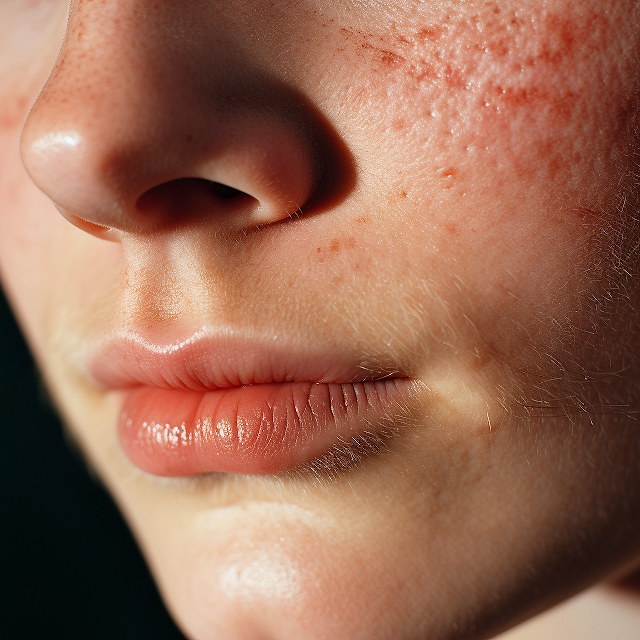Acne
Composed By Muhammad Aqeel Khan
Approx. 1500 words | References included Date 24/7/2025
Introduction
Acne is a prevalent skin condition that affects millions worldwide, manifesting as pimples, blackheads, whiteheads, and cysts. It commonly occurs during adolescence but can persist into adulthood. This article explores the causes, types, treatments, and prevention of acne, backed by scientific evidence and references.
Causes of Acne
Acne results from a combination of factors:
Excess Sebum Production: Overproduction of sebum by sebaceous glands leads to clogged pores.
Clogged Hair Follicles: Dead skin cells and oil can accumulate in hair follicles, forming comedones (blackheads and whiteheads).
Bacterial Infection: Propionibacterium acnes (now reclassified as Cutibacterium acnes) proliferates in clogged follicles, causing inflammation.
Hormonal Fluctuations: Androgens stimulate sebaceous gland activity, leading to acne, especially during puberty, pregnancy, or menstrual cycles.
Dietary Influence: Some studies suggest that high glycemic index foods and dairy products may exacerbate acne.
Genetic Predisposition: The chance of getting acne is increased if there is a family history of the ailment.
Lifestyle Factors and Stress: Prolonged stress can lead to hormonal changes that exacerbate acne.
Types of Acne
Comedonal Acne: Characterized by blackheads and whiteheads due to clogged pores.
Papules and pustules are symptoms of inflammatory acne, which is brought on by an immunological reaction and bacterial infection.
Nodulocystic Acne: Severe form with deep, painful nodules and cysts that may cause scarring.
Hormonal Acne: Often affects the jawline and chin, triggered by hormonal fluctuations.
Acne Mechanica: Caused by friction, pressure, or occlusion from tight clothing or gear.
Acne Treatment Approaches
1. Topical Treatments
Retinoids (Tretinoin, Adapalene, Tazarotene): Promote cell turnover and prevent clogged pores.
Benzoyl Peroxide: Kills C. acnes and reduces inflammation.
Salicylic Acid: Exfoliates the skin and clears blocked follicles.
Azelaic Acid: Has antibacterial and anti-inflammatory properties.
Topical antibiotics, such as erythromycin and clindamycin, lessen inflammation and bacterial development.
2. Oral Medications
For moderate to severe inflammatory acne, antibiotics such as erythromycin, minocycline, and doxycycline are used.
Hormonal therapies, such as spirolactone and oral contraceptives, control androgen levels and lessen sebum production.
Isotretinoin (Accutane): A powerful oral retinoid for severe acne, reducing sebaceous gland activity and inflammation.
3. Natural and Alternative Remedies
Tea Tree Oil: Exhibits antimicrobial properties similar to benzoyl peroxide.
Green Tea Extract: Contains antioxidants that reduce inflammation.
Zinc Supplements: May play a role in adjusting sebum secretion and strengthening immune defense.
Acne Prevention Strategies
Skincare Routine
Use a gentle cleanser twice daily.
Avoid over-exfoliating, which can worsen irritation.
Apply non-comedogenic moisturizers and sunscreens.
Diet and Lifestyle Modifications
Limit your consumption of dairy and high-glycemic foods.
Drink plenty of water and eat a healthy, antioxidant-rich diet.
Manage stress through mindfulness, exercise, and adequate sleep.
Avoiding Triggers
Do not pick or squeeze pimples to prevent scarring.
Keep hair and hands away from the face.
Change pillowcases regularly to reduce bacterial exposure.
Emerging Research and Future Directions
Microbiome Research: Understanding the skin’s microbiome could lead to probiotic-based treatments.
Genetic Studies: Identifying genetic factors may allow personalized acne treatments.
Laser and Light Therapies: Advanced phototherapy techniques show promise in acne reduction.
Conclusion
Acne is a multifactorial condition influenced by genetics, hormones, bacteria, and lifestyle. While various treatments exist, prevention and early intervention remain key to managing acne effectively. Ongoing research continues to enhance our understanding and treatment of acne, offering hope for more effective and personalized solutions.
References
Bhate, K., & Williams, H. C. (2013). "Epidemiology of acne vulgaris." The British Journal of Dermatology, 168(3), 474-485.
Zaenglein, A. L., et al. (2016). "Guidelines of care for the management of acne vulgaris." Journal of the American Academy of Dermatology, 74(5), 945-973.
Baldwin, H. (2012). "Inflammatory acne and Propionibacterium acnes." Journal of Clinical Aesthetic Dermatology, 5(5), 17-23.
Smith, R. N., et al. (2007). "Diet and acne: a review of the evidence." International Journal of Dermatology, 46(10), 1060-1072.
Dawson, A. L., & Dellavalle, R. P. (2013). "Acne vulgaris." BMJ Clinical Evidence, 2013, 1714.
